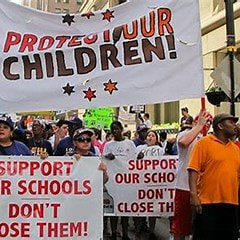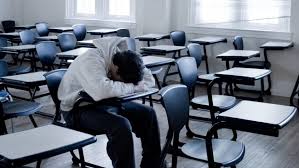
Education is a people business. The "clients" are young people looking for a teaching and learning situation that meets their personal needs. The service providers are highly professional and dedicated teachers who give everything that they can to deliver what their students require. Adequate funding is the grease that keeps the wheels of the system turning. Anytime that a government announces that it is going to freeze or reduce funding, the immediate "victims" are teachers who are now declared surplus but the ultimate price is paid by students whom no longer receive the education that they need.
Independent schools are a microcosm of the larger public school community. Charging fees that are double or triple the local per student grant rate, they offer small classes as an incentive to parents as an alternative to their larger public counterparts. As a result, schools often justify ever increasing fees by the need to preserve these small classes - cuts to public education are a perfect foil to support them in their arguments.
However, the rising costs of independent education has little or nothing to do with class size. In actual fact, average class size in most private school has not changed over the past ten years while, meanwhile, fees have increased many times the rate of inflation. So the question is, "where is all of that money going?". Two easy answers have been an increase in the number of instructional support staff since 2008/9 from one to every 153 students to one to every 53 students today and an increase in administration staff from one to every 45 students to one in every 26. Add to this rising benefit and pension costs and you have half of the story.
The other, virtually hidden, rising cost of staffing is focused on workload. For example, in the last decade, a typical staffing assignment might require teaching 30/35 blocks per week - in other words, one paid preparation period per day. In many schools that number has drifted down to 25/35 blocks per week - two paid preparation periods per day. In a school with 100 teachers, that reduction would necessitate an increase in staffing of 20 additional teachers to maintain current class sizes. At an average of $80K - $100K per teacher (salary and benefits) you are looking at an increased cost - with no additional service to students - of between $1.6 and $2 million dollars per year.
Looking at independent school statistics, the result has been status quo in class size and a drop of between 10-15% in the PTR in those same schools. Keeping in mind that that decrease in PTR has had no direct impact on students (the client) it can only be seen as a pure working condition expense.
It is no wonder that provincial governments and public boards see working conditions as the area in which the greatest savings and cost efficiencies can be found. Can independent schools be far behind? Taking an ostrich approach to this issue can only lead to education systems and independent schools driving themselves into bankruptcy.


 RSS Feed
RSS Feed